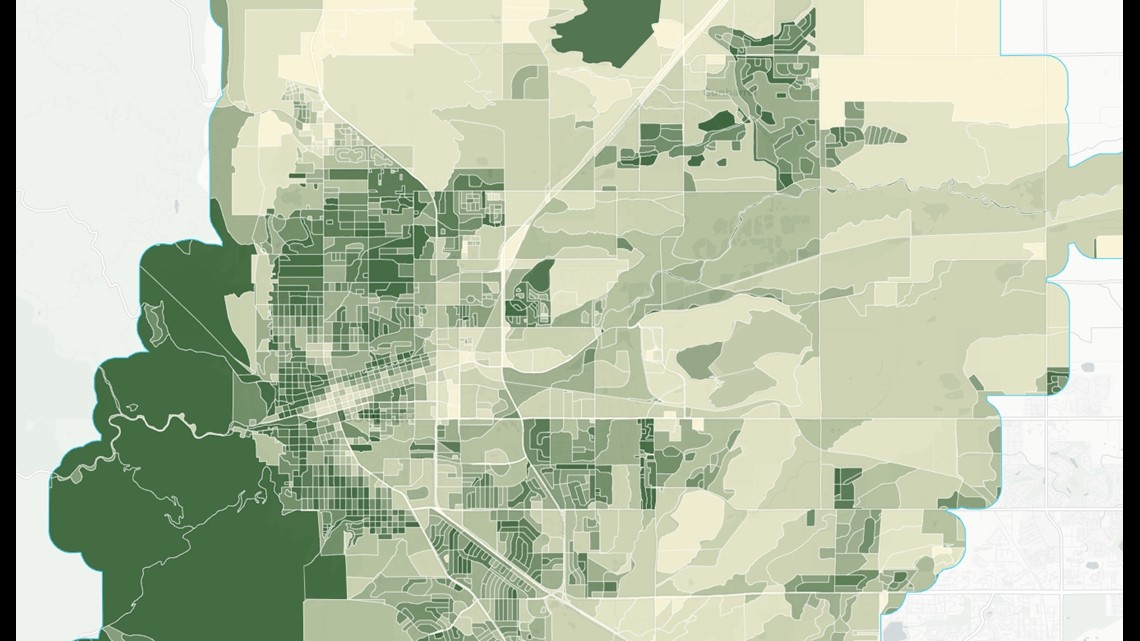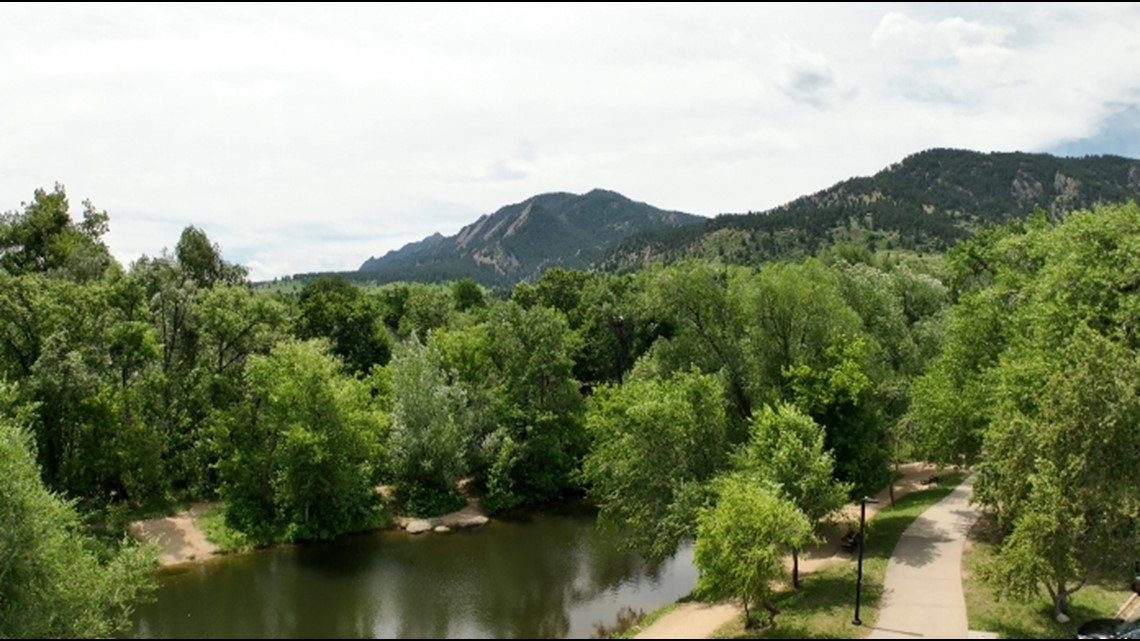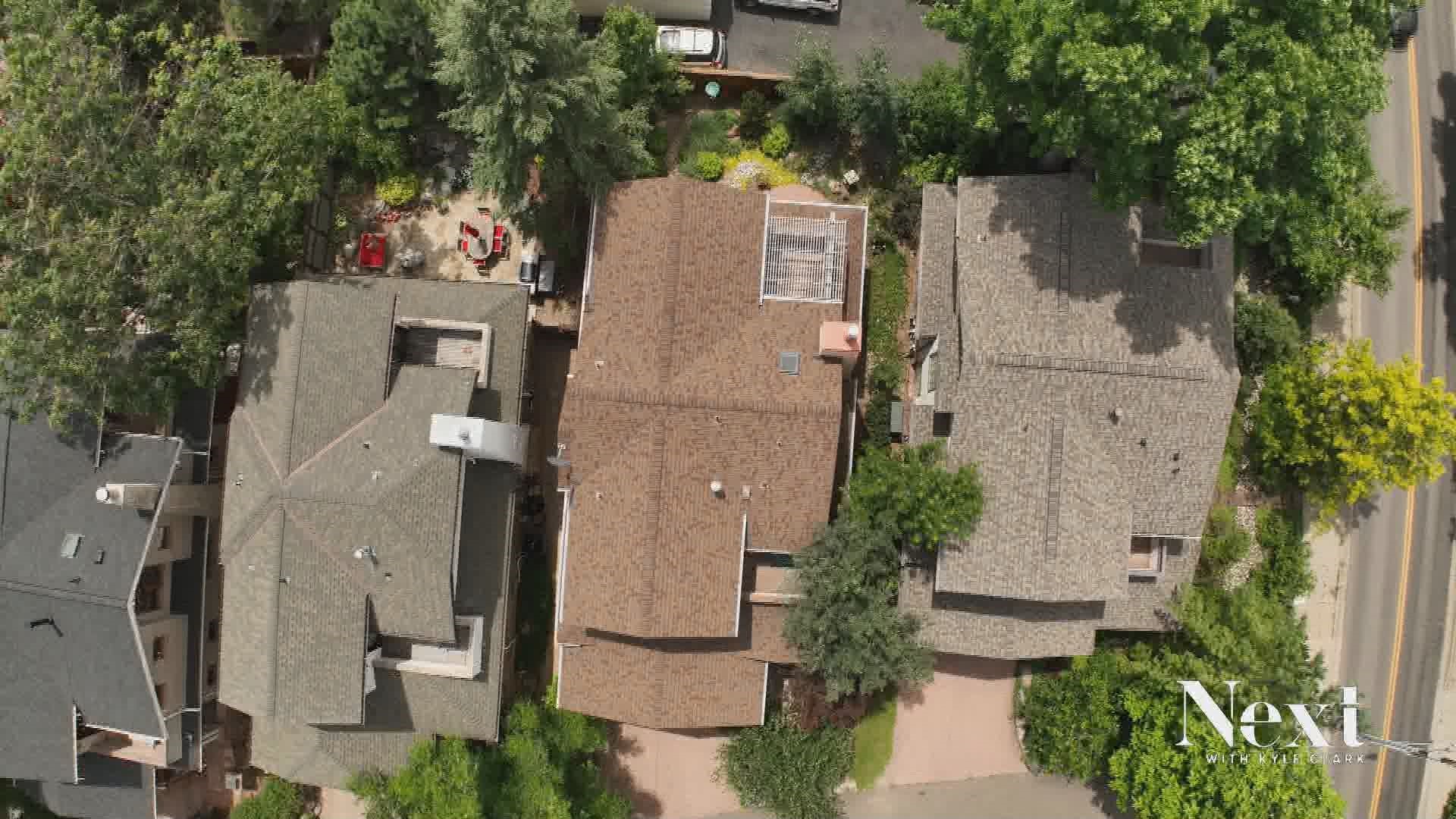BOULDER, Colo. — There are few places to hide on a day as hot as Tuesday.
Yet if it weren’t for the more than 600,000 trees around Boulder, the high of 94 degrees on Tuesday would feel cool.
"One of the things that we’ve realized is that trees matter a lot, in terms of maintaining these safe, livable, urban settings," said Brett KenCairn, senior manager of Nature Based Climate Solutions for the City of Boulder.
KenCairn’s job at the city is to figure out how to keep Boulder cool. The key is in the shade.
Boulder just launched a website called TreePlotter Canopy that shows tree canopy around the city and how it’s changed over time. Anyone can see data, even searching for a specific address. Using the data, KenCairn can figure out which communities need more trees, which ones have the least shade, and what type of trees and greenery would do best in certain spots.


"Anything that is brown or beige, those are all places that we have lost canopy. As a planner, I now know where I’m starting to have deficits in the natural infrastructure that my community needs to protect itself from the kinds of changes that are coming," said KenCairn. "This is what is then going to help us figure out where do we want to go and start engaging those local communities and say, would you be interested in getting more shade, more cooling in your community? How can we work together to do that?"
The website compares 2015 to 2021 data to show the change in tree canopy over time. The city will use it to also figure out which trees or shrubs would work best in certain areas to help cool down temperatures and make the most of rain and water.
It uses data in part from a study last year conducted with the National Oceanic and Atmospheric Administration to research the impact shade has across cities. In Boulder, they marked temperatures around the city on one day to measure the impact of shade on a community.
"We are facing absolutely historic changes and there is no denying it and there is no avoiding it," said KenCairn. "So we have to now prepare our communities to live through and hopefully thrive in a very different context than most of us grew up in."


Natural solutions will help Boulder survive rising temperatures for decades to come. Trees quite literally could save lives.
"We are talking about the potential difference of 10 to 20 degrees of temperature difference between a city that has actually prepared itself and has grown out its natural infrastructure to prepare for this versus a city that has not," said KenCairn. "That’s life-or-death differences."
A lot of people see trees as an aesthetic backdrop. Now cities, especially places like Boulder, are looking at them as a crucial piece of infrastructure. KenCairn sees each tree as a natural air conditioner, cooling down the city. If you plant more trees and create less large parking lots full of asphalt, you drop the temperature in the entire town.


"What I don’t think we’ve recognized enough is that these living landscapes around us have a remarkable capability of absorbing and sheltering and buffering us from those types of extremes.," said KenCairn. "I think we have come to recognize that not only do we need more plants and living things around us, we need the right living things."
You can look at the website showing shade in Boulder here. It is now publicly available to everyone.
SUGGESTED VIDEOS: Full Episodes of Next with Kyle Clark

